The State of Nature Report
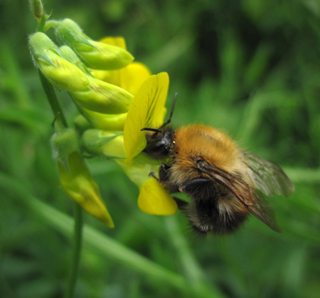 Compiled and published by a collaboration of conservation and research organisations, the State of Nature Report is a comprehensive assessment of how nature is doing across the UK, and how this picture is changing. Nick Coppin considers how this report relates to the Roseland.
Compiled and published by a collaboration of conservation and research organisations, the State of Nature Report is a comprehensive assessment of how nature is doing across the UK, and how this picture is changing. Nick Coppin considers how this report relates to the Roseland.
Nature is in trouble. The UK is becoming one of the most nature depleted countries in the developed world. We don’t know whether this is true for the Roseland, but there’s no reason to believe that it is any different.
 Why is this happening? In the UK we have a mostly enlightened regime of nature conservation through planning and protected sites: National and Local Nature Reserves, Sites of Special Scientific Interest, MCZs, SACs and SPAs, Cornwall Wildlife Sites, along with landscape scale designations such as AONB and Heritage Coast.
Why is this happening? In the UK we have a mostly enlightened regime of nature conservation through planning and protected sites: National and Local Nature Reserves, Sites of Special Scientific Interest, MCZs, SACs and SPAs, Cornwall Wildlife Sites, along with landscape scale designations such as AONB and Heritage Coast.
Whilst there are continuing threats to this site network from pollution, poor management and development, the main problem seems to be in the wider countryside. 75{c8c3b3d140ed11cb7662417ff7b2dc686ffa9c2daf0848ac14f76e68f36d0c20} of the land (in UK) is managed for food production and 10{c8c3b3d140ed11cb7662417ff7b2dc686ffa9c2daf0848ac14f76e68f36d0c20} is urban; thus much of our biodiversity is being confined to the remaining 15{c8c3b3d140ed11cb7662417ff7b2dc686ffa9c2daf0848ac14f76e68f36d0c20}. It’s not all bad news. There are many success stories, such as the return of the Cornish Chough and the reintroduction of the Cirl Bunting. However, these are the result of specific initiatives and are exceptions to the general trend towards biodiversity loss.
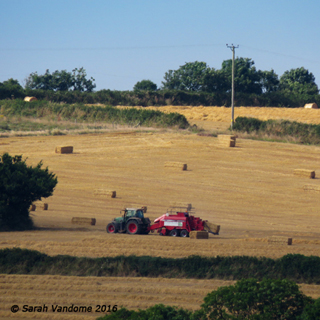 A range of factors affect the State of Nature, but the 2016 report highlights the two most significant as being intensification of agriculture and climate change. How we manage our agricultural land is key to the State of Nature (RSPB). However, we should not blame farmers – they are trying to make a living within a complex regime of national/EU agricultural policies and often conflicting subsidies, compounded by the market power exercised by the large supermarkets (which they do in the name of us, the customer).
A range of factors affect the State of Nature, but the 2016 report highlights the two most significant as being intensification of agriculture and climate change. How we manage our agricultural land is key to the State of Nature (RSPB). However, we should not blame farmers – they are trying to make a living within a complex regime of national/EU agricultural policies and often conflicting subsidies, compounded by the market power exercised by the large supermarkets (which they do in the name of us, the customer).
What can be done about this? National and regional policies to develop a more joined up approach to agricultural production and land management, whereby nature and good land management are properly valued, are urgently required. Good examples of this exist already, such as South West Water’s Upstream Thinking initiative.
What can we do ourselves, as individuals? Wild Roseland has a number of initiatives in hand to address this, at a local level. Providing information, raising awareness and enabling discovery is one of our main platforms. Our Wildflower and Homes for Wildlife projects are getting underway and will enable all of us to make a difference.
We can all seek to make our homes and gardens more wildlife friendly, for example by creating refuges, growing food plants and providing nesting sites (for example see last Month’s feature on Swifts). Individually we can each do a little which collectively will make a big difference!
PROJECT ACTIVITY UPDATE
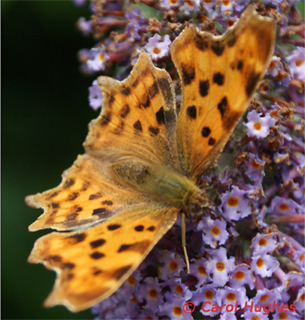 Hedgerow survey progressing well
Hedgerow survey progressing well
One of the first projects that we embarked on as Wild Roseland is a survey of our hedgerows. Hedgerows are a valuable wildlife resource because they form a network of habitat for a wide range of species across most of our countryside. These ‘corridors’ are good for wild plants, nesting birds and insects, which in their turn are important for bats and other animals.
Cornish hedges are a particularly valuable resource, as they include earth/stone wall habitats as well as the shrubby hedges. However, hedgerows are under threat due to a combination of neglect, hedge removal (to make fields larger for modern agricultural methods and machinery), agricultural pesticides, the use and timing of flail cutting replacing traditional (but uneconomic) manual hedging methods, together with the decline in traditional hedge construction and laying crafts.
This is a long term project that will take some years to complete. In April 2016 Carol Hughes and Sue Pring began the task, starting in their home Parish of Ruan. They spent some time initially refining their survey methods, which was based on the standard survey methods used by ecologists but simplified for practicality. They also spent some time comparing historical and modern maps, to age and identify the oldest ones which, in theory, should be the most diverse and valuable. Talking to landowners and farmers to gain permission to walk their fields also took some time, and farmers have in general been extremely helpful and supportive.
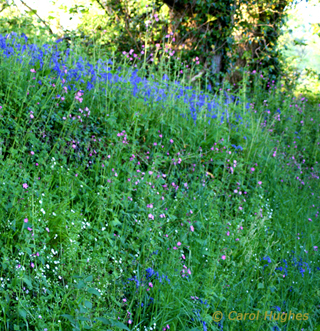 This year some 193 hedges have been surveyed (in Ruan Parish), of which 61{c8c3b3d140ed11cb7662417ff7b2dc686ffa9c2daf0848ac14f76e68f36d0c20} can be found on the 1842 tithe map, with the oldest being 5 hedges that can be dated back to 1690. So we still have a good proportion of old historic hedges on the Roseland. The main hedge construction is still of earth or earth/stone bank. The majority of hedges have small trees, only a small minority having large trees, with 21 tree species recorded so far. In total 130 different plant species have been identified, averaging 20.3 species per hedge. In addition, stiles of differing traditional construction have been identified, which are also of historical interest.
This year some 193 hedges have been surveyed (in Ruan Parish), of which 61{c8c3b3d140ed11cb7662417ff7b2dc686ffa9c2daf0848ac14f76e68f36d0c20} can be found on the 1842 tithe map, with the oldest being 5 hedges that can be dated back to 1690. So we still have a good proportion of old historic hedges on the Roseland. The main hedge construction is still of earth or earth/stone bank. The majority of hedges have small trees, only a small minority having large trees, with 21 tree species recorded so far. In total 130 different plant species have been identified, averaging 20.3 species per hedge. In addition, stiles of differing traditional construction have been identified, which are also of historical interest.
It was clear from the start that they were going to need some help so in May and June Carol and Sue held workshops to recruit and train volunteers to assist. They now have others walking hedges in Ruan, Veryan and St Just in Roseland, but more volunteers are still needed! If you enjoy any excuse to get out into the countryside and would like to help with this project, please contact Wild Roseland.
Wild Flower Pollination Project.
(Main sponsor, Roseland Online )
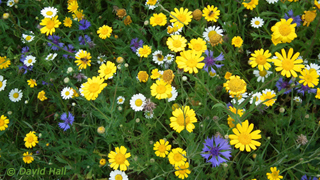 Have you noticed a shortage of bees and butterflies this year on the Roseland? The drop in our insect population is worrying as it is so important for flower, crop and plant pollination. Insects also form part of the diet of numerous birds and mammals. 56{c8c3b3d140ed11cb7662417ff7b2dc686ffa9c2daf0848ac14f76e68f36d0c20} of all UK species of wildlife have declined according to the recent “State of Nature “report based on the evidence of 29 conservation bodies.
Have you noticed a shortage of bees and butterflies this year on the Roseland? The drop in our insect population is worrying as it is so important for flower, crop and plant pollination. Insects also form part of the diet of numerous birds and mammals. 56{c8c3b3d140ed11cb7662417ff7b2dc686ffa9c2daf0848ac14f76e68f36d0c20} of all UK species of wildlife have declined according to the recent “State of Nature “report based on the evidence of 29 conservation bodies.
Various reasons have been put forward for this from climate change to changes in farming practices, land use or changes in building design and conversions. Whatever the causes there is still something that we can do about it. The idea put to local parish councils about creating areas for wild flowers to aid insect pollination was well received and suitable sites were suggested by members.
However wild flowers are fussy about where they will thrive. They like ground that has lots of sunlight, with some exceptions. Competition from coarse dense grasses smothers them from light and crowds them out. If soil has been fertilised, or is heavily grassed, sown wild flowers will fail. Perennials and plug plants could be used but that is labour intensive requiring regular tending and watering.
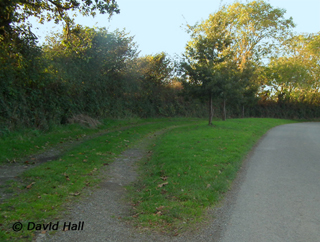 So what to do next: -first, determine land ownership, seek permission to plant, and consult highways for sightline issues or grass cutting routines. Then, select and order seed with UK provenance, estimate quantities and sowing regime. So far the area beside Ruan Chapel (depicted here) has been prepared and the banking opposite Gerrans surgery planted and marked off with small posts.
So what to do next: -first, determine land ownership, seek permission to plant, and consult highways for sightline issues or grass cutting routines. Then, select and order seed with UK provenance, estimate quantities and sowing regime. So far the area beside Ruan Chapel (depicted here) has been prepared and the banking opposite Gerrans surgery planted and marked off with small posts.
In this area traditional meadow flower seed has been sown comprising a mixture of Poppy, Cornflower, Yarrow, Knapweed, Lady’s Bedstraw, Meadow Cranesbill, Field Scabious, Meadow Vetchling, Rough Hawkbit, Oxeye Daisy, Birdsfoot Trefoil, Musk Mallow, Ribwort Plantain, Hoary Plantain, Cowslip, Selfheal, Meadow Buttercup, Common Sorrell and Wild Red Clover. Also Yellow Rattle which is important as it weakens dominant grasses, allowing the wild flowers to flourish. Let’s hope it is successful!
Planting in other parishes is planned for spring. Of course if you who have gardens you can create your own area for growing wild flowers. But please make sure you are using accredited UK seed. Good places to look online for help for preparing small gardens and for appropriate seed or plugs are http://www.meadowinmygarden.co.uk, http://www.charlesflowers-wildflowers.co.uk, http://www.plantlife.org.uk,
David Hall (Wild Roseland)
Wild Roseland Photography Project: Exhibition/ Competition
 Calling all photographers young and not so young. As previously mentioned in October’s feature, the Wild Roseland Group, sponsored by the Roseland Festival, is organizing a Photography Exhibition/Competition during next year’s Roseland Festival which takes place 22nd April to 6th May 2017.
Calling all photographers young and not so young. As previously mentioned in October’s feature, the Wild Roseland Group, sponsored by the Roseland Festival, is organizing a Photography Exhibition/Competition during next year’s Roseland Festival which takes place 22nd April to 6th May 2017.
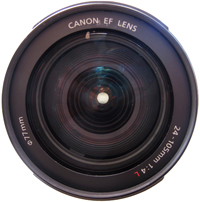 The subject is” Wild Roseland”: – seascapes, landscapes, woods, plants, birds, animals, anything in fact which is evocative of the beauty of the Roseland peninsula. Pebbles, puddles, ferns and fish, birds, butterflies, winter seas and sunsets. The possibilities are endless.
The subject is” Wild Roseland”: – seascapes, landscapes, woods, plants, birds, animals, anything in fact which is evocative of the beauty of the Roseland peninsula. Pebbles, puddles, ferns and fish, birds, butterflies, winter seas and sunsets. The possibilities are endless.
There will be various categories, such as “Close Encounters” and different age groups, something for everyone in fact, with a public Exhibition to be held in Gerrans Memorial Hall, and brilliant prizes as a finale! Get your lenses at the ready and begin taking photos with cameras, phones or tablets and watch this space for more details.
Upcoming Wild Roseland Walks and Talks – dates for your diary
Note that all events are free but a small donation of £3 would be welcomed.
Place and People – the Cornwall AONB and opportunities for the Roseland, by Colette Beckham, CAONB Partnership Manager.
Thursday 17 th November 2016, 7.00pm, Philleigh Community Centre.
Much of the Roseland falls within the Cornwall Area of Outstanding Natural Beauty. Colette will outline their projects and initiatives, including their Management Plan for 2016-2021, and what opportunities this presents for the wild nature of the Roseland.
Wildlife Recording – talk and workshop, by Martin Goodall of the Environmental Records Centre for Cornwall and Isles of Scilly (ERCCIS)
Thursday 19th January 2017, 7.00pm at The Harbour Club, Portscatho.
The Environmental Records Centre (based at the Cornwall Wildlife Trust) maintains important records of the occurrence of flora and fauna across Cornwall – a vital resource for monitoring species. They rely on volunteers to submit records and sightings of species – common and rare, and Wild Roseland can make an important contribution to this. This talk on the work of ERCCIS will include a workshop on how to use the recording system and submit records online. (Bring your laptop or tablet for hands-on involvement.)
Return of the Chough by Claire Mucklow, RSPB.
Thursday 16 th February 2016, venue to be arranged.
Claire will talk about the work of RSPB on the Roseland, in particular the recent return of the Chough.
SPECIES OF THE MONTH – Grey Seal
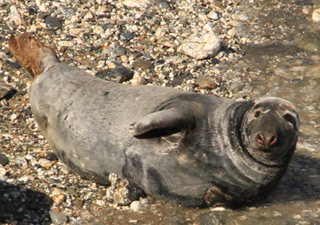 We are now in grey seal pupping season. The Roseland has a number of secluded coves and caves, where mothers hide away to give birth and take of pups. If you are lucky enough to spot a white coat pup in one of these places then keep a good distance away, as interference may cause the mother to abandon it. She will undoubtedly be nearby and probably have spotted you before you see her.
We are now in grey seal pupping season. The Roseland has a number of secluded coves and caves, where mothers hide away to give birth and take of pups. If you are lucky enough to spot a white coat pup in one of these places then keep a good distance away, as interference may cause the mother to abandon it. She will undoubtedly be nearby and probably have spotted you before you see her.
Older pups appearing on beaches with frequent public access will probably be independent of the mother, but still should be left alone unless clearly in trouble. If you are at all concerned, call British Divers Marine Life Rescue 01825 765 546 (office hours) or 07787 433412 (out of hours) in the first instance.
Wild Roseland is a group of volunteers who care passionately about looking after the nature and landscape of the Roseland peninsula in south Cornwall. Through a number of initiatives and projects, the aim is to inspire and enhance the conservation of this special place for all.
Edited by Sarh E Vandome
Contributors: Nick Coppin, Carol Hughes, David Hall, Jo Hall.
References and links
Enjoy more Roseland wildlife and landscapes – visit Sarah Vandome’s Heart of Roseland Facebook feature:


